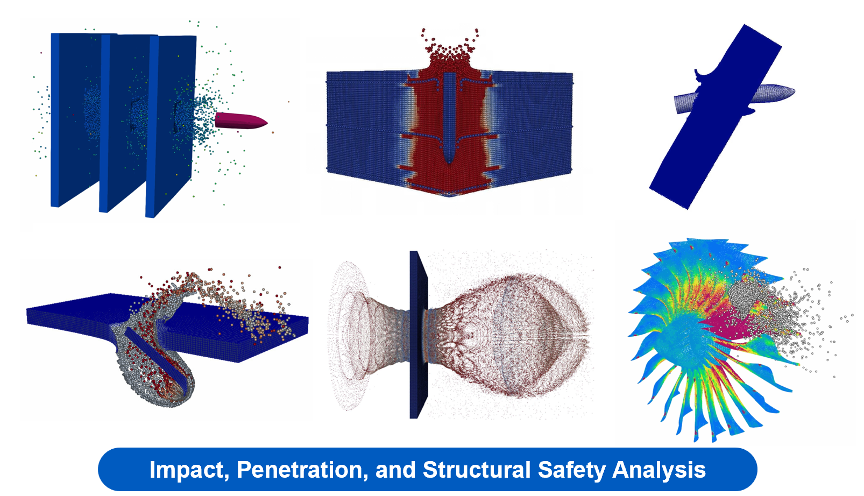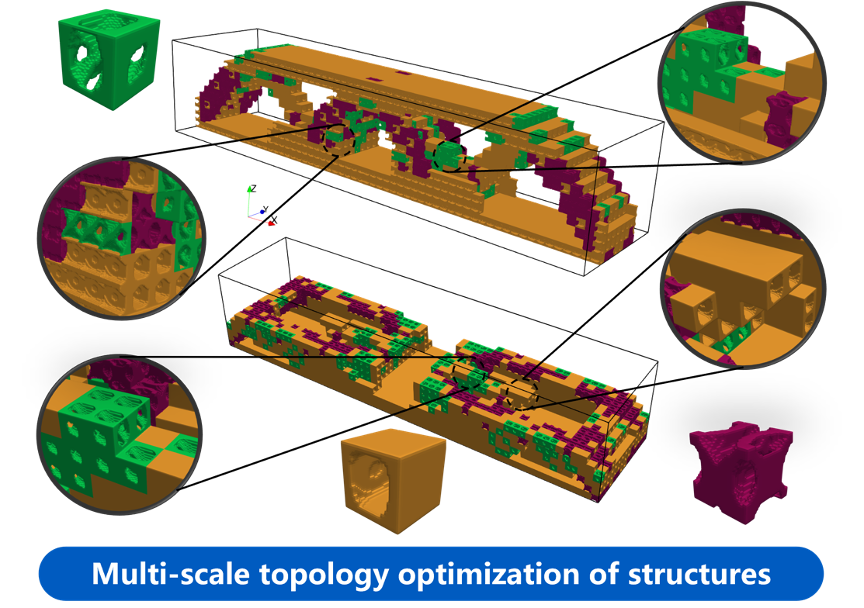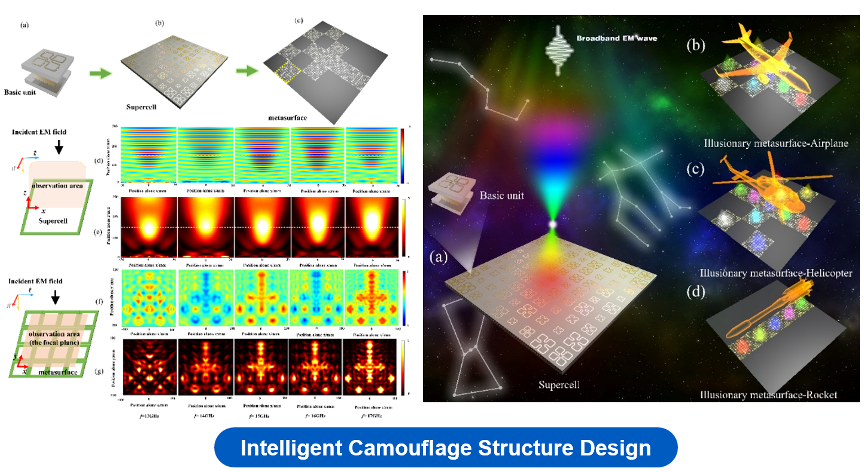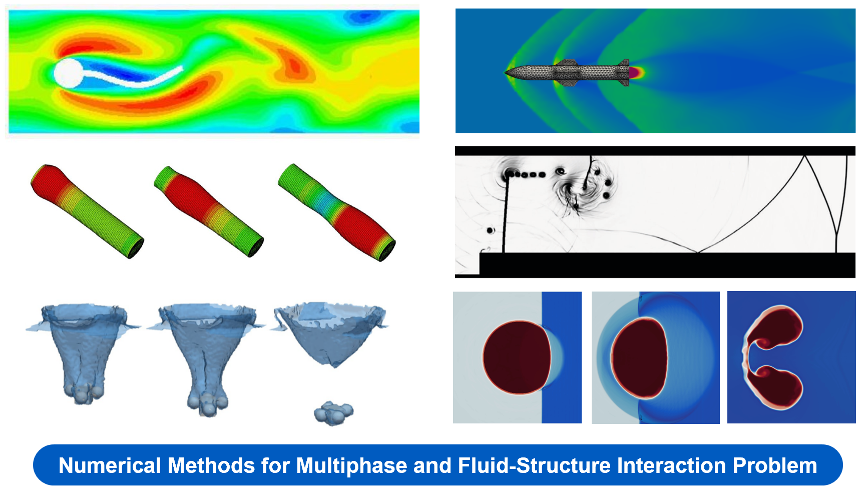We are passionately committed to tackling the intricate challenges of structural design, analysis, and performance evaluation that encompass multi-physics and multi-scale dimensions. Our mission is targeted at developing sophisticated numerical methods that excel in both efficiency and accuracy, complemented by cutting-edge software solutions. The core of the research is at computational mechanics, relying on a rich tapestry of multidisciplinary expertise in electromagnetics, acoustics, and thermodynamics. By harnessing advanced numerical techniques and state-of-the-art software, we aspire to craft innovative "strategic numerical tools" that empower the design, analysis, and performance assessment of advanced structures. Our commitment is to provide powerful and transformative tools that facilitate next-generation upgrades in equipment across various sectors, including aerospace, energy, and marine engineering at the forefront of technological advancements.
n High efficiency and accuracy meshless methods for impact and penetraion problems

For highly nonlinear impact and penetration problems with extreme deformation, as well as explosive damage problems, we have proposed highly efficient and accurate meshfree methods, along with their coupling with other mesh-based numerical methods (including the finite element method, finite volume method, and others), in addition to multi-scale algorithms. In particular, our proposed methods facilitate high-fidelity simulations of fluid-structure interactions that involve structural damage and high-speed or hypervelocity impacts. These advancements provide essential numerical tools for designing shock-resistant structures in fields such as aerospace, naval engineering, and protective infrastructure.
n Numerical methods for metal addtitional manufacturing

For the geometry-control and property-control problems in metal additive manufacturing, we have proposed a series of novel multi-scale and multi-physics coupling methods for process simulation, extended cellular automata methods for predicting material grain structure, and data-driven methods for predicting as-built material properties. Together, they enable an integrated numerical model encompassing "process, microstructure, mechanical properties, and performance." This comprehensive approach provides valuable numerical tools for optimizing the process parameters in metal additive manufacturing.
n Structural dynamics optimization and multi-material multi-scale topology optimization

In the field of structural dynamics optimization, the team has proposed methods such as reduced-space optimization design for nonlinear dynamics in time and frequency domains under periodic and quasi-periodic motions, culminating in the publication of the monograph Structural Dynamics Optimization. For multi-material multi-scale structural optimization, we have developed the single-variable discrete combinatorial optimization relaxation model. Based on isogeometric finite element analysis, we have established single-variable multi-material multi-scale topology optimization design methods for both structured and unstructured meshes. These approaches have circumvented non-physical solutions, such as material closure issues inherent in traditional methods, by efficient dimensionality reduction of design variables, and enhancing computational efficiency in the topology optimization of complex structures. These methods have been successfully applied to numerous engineering structures.
n Structural vibration analysis and optimization

For the vibration analysis of composite plate and shell structures, we have proposed a highly efficient and accurate symplectic wave-based method, and developed the structural vibration solver. For the multiscale dynamic topology optimization of structures, the team has advanced a multiscale concurrent topology optimization method based on the extended multiscale finite element method and developed a structural topology optimization software.
n Wave mechanics and intelligent design of advanced structures and materials

For elastic/acoustic wave regulations in advanced structures and materials, new wave models were established systematically. We have developed a series of inverse-design methodologies for metamaterials with customized wave functionalities (low-frequency vibration isolation/suppression, acoustic invisibility, ultrasound imaging, acoustic holography, etc.). In addition, the team has built a machine learning-driven framework for large-scale holographic optimization of acoustic metasurfaces with millions of microstructures. We proposes the concept of underwater acoustic variable-mode metasurfaces. The connection between wave behavior and microstructure topology was clarified. Based on these models and methodologies, application explorations were carried out in several technologies such as underwater equipment acoustic covering layers, composite material ultrasound non-destructive testing, medical ultrasound imaging, and acoustic tweezers.
n Intelligent design methodology for electromagnetic wave-multiphysics responsive materials

Focusing on the challenges of scattering response design and evaluation in electromagnetic wave fields, acoustic wave fields, and fluid dynamics fields, this research conducts intelligent design methodologies for electromagnetic wave-responsive materials based on complex patterns. It aims to achieve intelligent multi-physics responsive material design and explore real-time intelligent control methods and technical approaches. Furthermore, the study investigates the mechanisms and evaluates the characteristics of scattering responses, including reflection amplitude and phase in electromagnetic and acoustic wave fields. The findings will provide theoretical support and fundamental material structural prototypes for equipment stealth and intelligent camouflage multifunctional materials.
n Fluid-structure interarction and multi-physical numerical methods

For the fluid-structure interaction problem involving incompressible fluid flow and large deformation of the structure, we have proposed the immersed finite element material point method and the finite volume-finite element method under the arbitrary Lagrangian-Eulerian description. For the FSI problem with compressible fluid flow, we have developed numerical methods based on the high-order finite difference method, the virtual fluid method, and the immersed boundary method. These approaches enable high-accuracy simulations of high-speed aircraft dynamics and explosion-driven fluid-structure interaction scenarios, achieving high-accuracy simulations of high-speed aircraft dynamics problems and explosion-driven fluid-structure interaction problems. These numerical methods provide powerful tools for the multi-physics coupling analysis in aviation, aerospace, energy, defense, ocean, and other fields..
